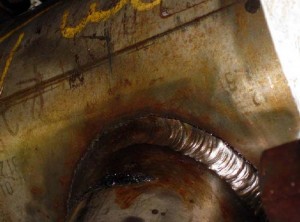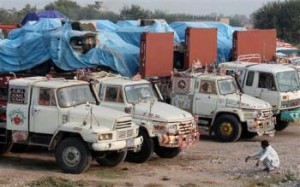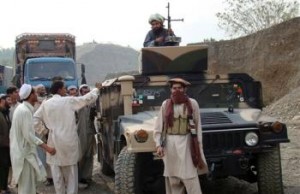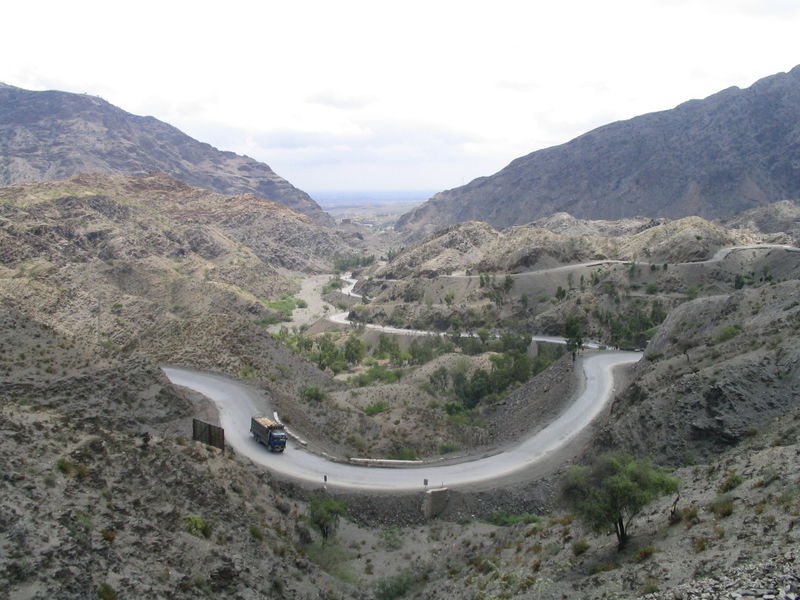In keeping with our theme of logistics of late, it bears mentioning that we’ve pointed out before that Obama’s ego may be writing checks that the U.S. military can’t cash. The logistics officers know how difficult it is to move the U.S. military and materiel, and Forbes gives us the thoughts of a logistics officer thinking merely about deploying a Brigade to Iraq (from an article several months ago).
While mission and TPFDD specifications vary, each brigade is allotted a standard cache of equipment and supplies. “There are 1,870 pieces of heavy equipment–plus or minus–required for every brigade, and that’s just for the machinery,” says Cashner.
Among the heavier items are 919 wheeled vehicles, including trucks and Humvees, and 424 tow vehicles. There are forklifts, generators and cranes to hoist and lower equipment when the brigade rumbles through Iraq. And there are 514 brigade tanks, including Bradley fighting vehicles, perhaps the most challenging items to move.
“Each [Bradley] weighs 70 tons,” says Cashner. “An African male elephant weighs 5 tons. So one tank weighs the equivalent of 12 male elephants.”
While the tanks, trailers and tow trucks rumble across Fort Riley toward the railhead staging platform, soldiers are loading boxes onto the trains. They pack spark plugs and spare engine parts, and stack some 2,850 shipping boxes containing everything from packaged omelets to chicken cordon bleu. They must load enough food to feed the 3,800-man brigade three square meals for the first three days of deployment.
The first rail car leaves at N+48. The 800-mile trip from Kansas to Texas takes 18 hours. All considered, it will take at least 500 to 600 rail cars to transport the combat brigade’s stuff from “fort to port.”
Once at the port in Texas, the brigade’s equipment and supplies will be packed on to massive container ships, each one 15 stories tall and about 1,000 feet long–the length of three football fields.
“To move the brigade, military logistics officials must marshal, at the very least, 19 cargo ships,” said Cashner. “They are humongous carriers with open decks, and you literally drive up the ramps and park your vehicles.”
The container ships carrying the bulk of the brigade or division equipment ship out one after the other, and often stop for additional supplies at Hampton Roads, Va., home to several military harbors. Roughly a week later, they arrive at one of the military’s so-called “power performance platforms,” massive debarkation hubs, in either Shuaiba, in Kuwait, or in Qatar, from where the equipment will travel by land to Iraq.
Meanwhile, late last year, with talk of troop withdrawals, logistics officials at U.S. Central Command started to ponder how they would retrieve the almost unfathomable array of equipment and supplies they have poured into Southwest Asia over the past five years. “It’s very easy to take things off the ship,” Cashner said. On the returning journey, though, everything from tanks to hand tools must be repaired, cleaned and labeled for customs. Getting out, just like getting in, could take years.
Admiral Mullen has recently weighed in with somewhat less detail but just as strongly about what it will take to bring the troops home from Iraq.
Admiral Michael Mullen said it will take at least two years to safely withdraw all U.S. troops from Iraq, an estimate that may conflict with President-elect Barack Obama’s goal of pulling most forces out within 16 months.
Mullen, the chairman of the Joint Chiefs of Staff, also said at a Pentagon news conference that the time wasn’t yet right to begin negotiating with elements of the Taliban in Afghanistan.
Mullen, the president’s principal military adviser, said it was possible to meet the three-year withdrawal deadline set in a status-of-forces agreement that was approved by the Iraqi Cabinet yesterday. He confirmed that the agreement calls for all U.S. forces to be out by the end of 2011, regardless of conditions on the ground.
“It’s very doable, but it’s not the kind of thing that we could do overnight,” Mullen said. “To remove the entire force would be two to three years, as opposed to something we could do in a very short period of time.”
As for Obama’s goal of removing U.S. combat forces within 16 months, with just a residual force remaining to train Iraqis and conduct counter-terrorism operations, Mullen said he would follow whatever orders the commander-in-chief gives him.
“Should President-elect Obama give me direction, I would carry that out,” he said. “That’s what I do as a senior member of the military.”
The questioning obviously pushed Adm. Mullen in the direction of trying to explain why what he said could be reconciled with a new commander in chief whose orders might contradict what he just said. Says Adm, Mullen, “I’ll try my best to do what I am told to do.”
In America, the military reports to civilian authority. But what Adm. Mullen couldn’t explain to the stolid reporters present at the news conferences is that it isn’t really up to him, and it isn’t even up to Obama, political promises nothwithstanding. The concerns are far more pedestrian than that.
It isn’t about giving orders and expecting them to be obeyed. We can order a five year old child to perform mathematical manipulations with calculus, or the world’s strongest man to pick up an elephant. In both cases try as they might, the expectations cannot be met by either one.
Regardless of the order given at the top and conveyed by Adm. Mullen, there is one thing clear from what we know. The logistics officers decide what can and can’t be done, and they will tell that to their chain of command, and Adm. Mullen will then have to tell that to Obama. That’s the way it works. Adm. Mullen knows that, and while he was attempting to show his servitude to the civilian authority structure, he was also giving us a not-so-coded or hidden message: Logistics rules, dude!







